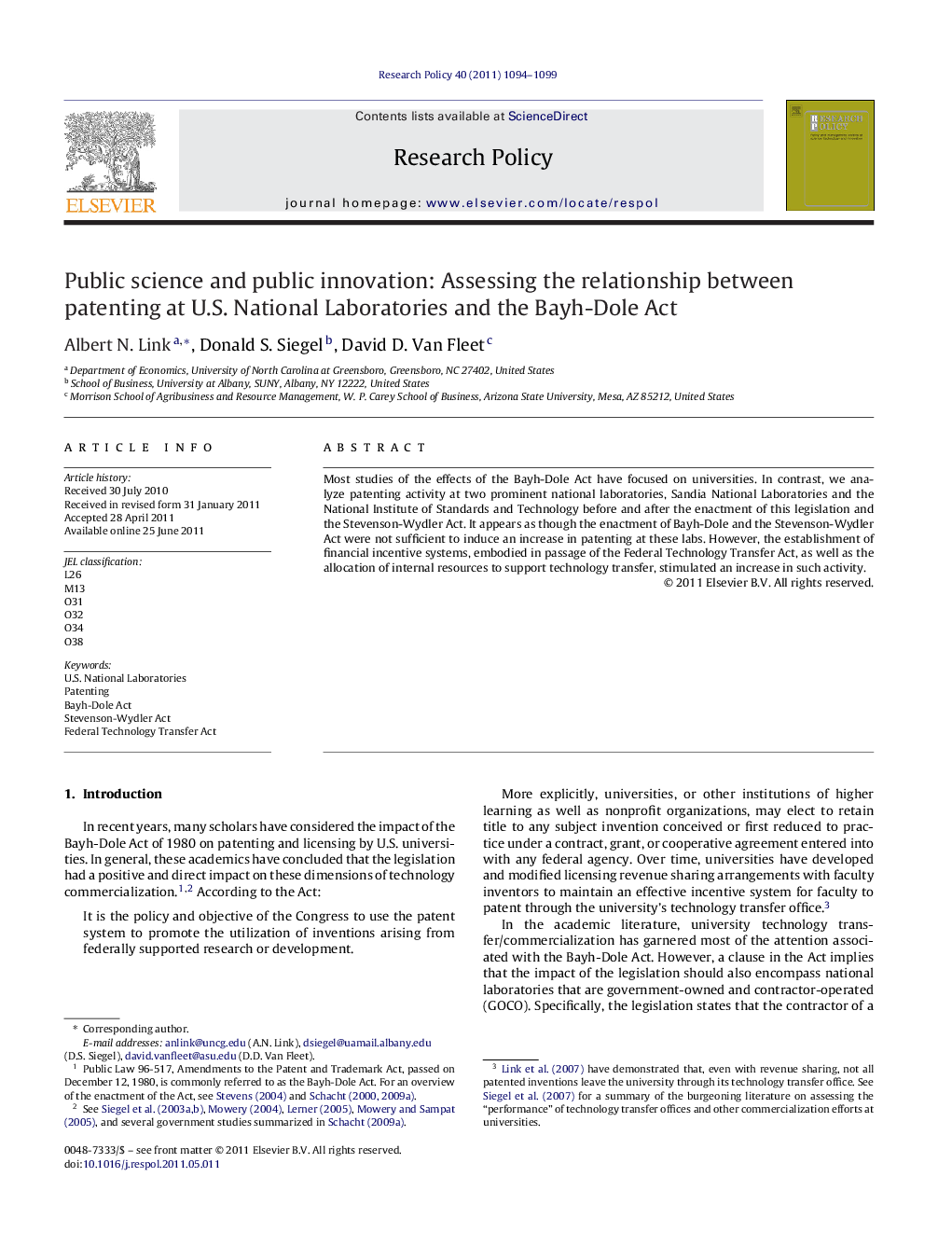| Article ID | Journal | Published Year | Pages | File Type |
|---|---|---|---|---|
| 984086 | Research Policy | 2011 | 6 Pages |
Most studies of the effects of the Bayh-Dole Act have focused on universities. In contrast, we analyze patenting activity at two prominent national laboratories, Sandia National Laboratories and the National Institute of Standards and Technology before and after the enactment of this legislation and the Stevenson-Wydler Act. It appears as though the enactment of Bayh-Dole and the Stevenson-Wydler Act were not sufficient to induce an increase in patenting at these labs. However, the establishment of financial incentive systems, embodied in passage of the Federal Technology Transfer Act, as well as the allocation of internal resources to support technology transfer, stimulated an increase in such activity.
► In this study we identify correlated with patenting activity at two U.S. national laboratories—Sandia National Laboratories and the National Institute of Standards and Technology. ► We find that the enactment of public policies that provided incentives for scientists in national laboratories to patent were primary drivers of patenting activity. ► The allocation of internal laboratory resource to support technology transfer is also correlated with patenting activity.
